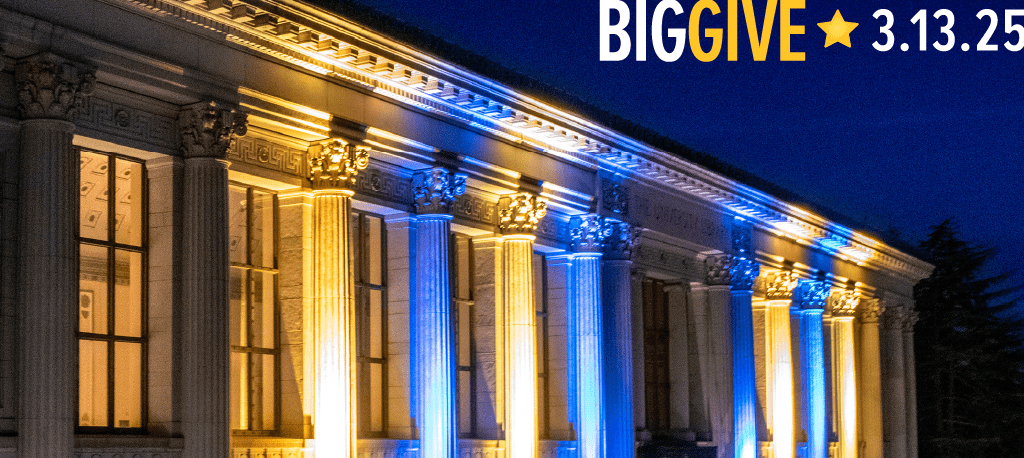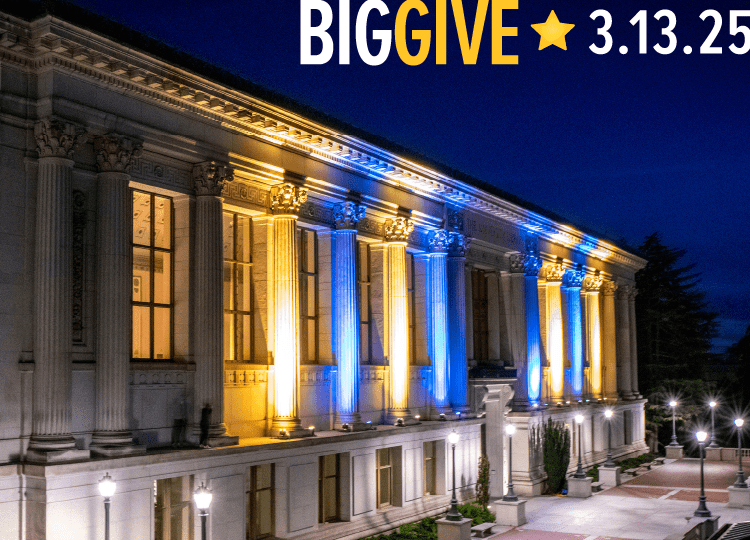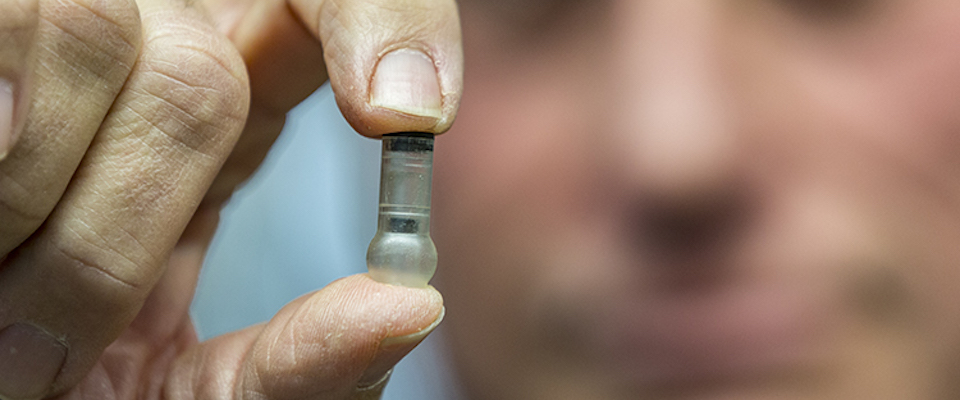Clifford Stoll is currently the sole proprietor and sole employee of Acme Klein Bottles, a business he runs out of his home on Colby Street in North Oakland. One of the quirky company’s many mottoes is, “Where yesterday’s future is here today.”
This is the same Cliff Stoll who once enjoyed fame as a Cold War cybersleuth. Back then—30 years ago now—Stoll was a wiry, wild-haired 36-year-old with his head in the stars. A Ph.D. in astronomy, he was then working at his dream job: designing telescope optics for Lawrence Berkeley Lab’s Keck Observatory. But the dream evaporated one day when his grant money ran out. “Luckily for me,” Stoll says now, “LBL recycled used astronomers. I was transferred down to the computer center in the basement of the same building and started work as a computer systems manager.”
LBL’s computers were state-of-the-art for 1986. “We were using Sun workstations that we thought were hot stuff because they had almost 100 megabytes of disk space, 128 kilobytes of memory, and roared at the blinding speed of 8 megahertz,” he says. “The cell phone in your pocket is thousands of times more powerful than that. We also had 50 80-megabyte external disk drives the size of washing machines. They sounded like washing machines, too, rattling around like they were on spin cycle.”
Stoll was on his second day on the job when his boss came to him with a seemingly trivial anomaly to solve.
“It was a 75-cent accounting error in the computer usage accounts,” says Stoll, who looked—and still looks—like he stepped straight off the pages of The Fabulous Furry Freak Brothers. “I traced the error to an unauthorized user who had used about nine seconds and not paid for it.” Stoll assumed the trespasser was a Cal undergraduate doing it on a lark, “just some kid on campus who was yanking my chain.”

Fascinated by the challenge of identifying the intruder, he spent the next ten months trying to solve the puzzle, often sleeping on a cot at the lab instead of going home, because whoever it was tended to log on late at night. “It was like a piece of yarn dangling from a sweater,” he says. “You keep pulling on it and discovering that the yarn never ends. The sweater keeps unraveling until all you end up with is a mountain of tangles.”
As he made his way through the thickets of information, it gradually dawned on him that this was no Cal student. Stoll was able to follow the thread as far as a call center at MITRE, a defense contractor in McLean, Virginia, not far from CIA headquarters.
He attached a teleprinter to the line and sat back and watched in amazement as the hacker used the LBL computers to gain access to military bases across the country, searching for files containing words like nuclear or SDI (short for President Reagan’s controversial Strategic Defense Initiative program, a proposed “missile shield” that threatened to further destabilize an already tenuous nuclear détente. Critics derisively referred to it as “Star Wars.”). The hacker, Stoll says, “was like a cuckoo bird, which lays its egg in another bird’s nest so the other bird will hatch it and raise it.
“At that point, it stopped being a game. All the three-letter agencies started banging on my door—FBI, CIA, NSA, as well as the Air Force Office of Special Investigations.” And just like that, Cliff Stoll, goofball Berkeley hippie, had suddenly become Cliff Stoll, Cold Warrior. It was as if Wavy Gravy had somehow been miscast in a film adaptation of a John le Carré novel. This was no clowning around, however. This was serious stuff, involving not only national security but also the integrity of networked data everywhere.
But how to get the hacker to reveal their identity? While in the shower one day, Stoll hit upon a simple idea, a kind of sting operation known in the spy business as a “honeypot.” He dubbed it Operation Showerhead.
“I discovered to my astonishment that the United States suddenly had personal meaning to me. I was no longer living in the People’s Republic of Berkeley; I was part of a much larger community. And it pissed me off that somebody was breaking into that community—not just the community of the United States, but also the community of academics and computer people who, even if they weren’t my friends, were still my colleagues. Somebody was breaking in and not just stealing information, but spreading mistrust and causing people to put up walls and disconnect from networks for fear that someone would be hacking around their system. Of all things, of all people, I found out I had skin in the game—a transnational game in a community that went far beyond Sproul Plaza.”
The American spy agencies were reluctant to get involved officially—partly because there was confusion about who had jurisdiction, but mostly because they had never encountered a case of computer break-in before. Hacker was still a relatively new term. Still, they were happy to work with Stoll unofficially, and with their help he traced the intruder’s call to the West German city of Bremen.
But how to get the hacker to reveal their identity? While in the shower one day, Stoll hit upon a simple idea, a kind of sting operation known in the spy business as a “honeypot.” He dubbed it Operation Showerhead. Knowing that the mole’s main interest was SDI, Stoll set up a phony SDInet folder and filled it with files loaded with impressive-sounding bureaucratic gobbledygook.
“All you have to do to make military gobbledygook is to use academic gobbledygook and change the job titles—‘undergraduate’ to ‘lieutenant,’ ‘professor’ to ‘colonel,’ and ‘dean’ to ‘general,’” he explains. “Then throw in words like ‘parameters’ and ‘implement.’ Who can tell the difference? I sure didn’t, and the KGB even less so.”
Sure enough, the perpetrator bit—and stayed on the line long enough for Deutsche Bundespost to locate him at his home in Hanover, West Germany. His name was Markus Hess—now known as the Hanover Hacker—and he and his ring of spies had been selling information to the KGB for years. Stoll got independent confirmation a few days later when a Bulgarian spy contacted the bogus SDInet by mail, based on “information” that could only have come from Stoll’s phony files. “Apparently, that was the KGB’s way of double-checking to make sure [Hess] wasn’t selling them stuff he had made up,” says Stoll, who flew to Germany to testify at the trial, in 1990, of Hess and his co-conspirators.
“There were five of them. One turned state’s evidence, one committed suicide—his body was found immolated in a forest—and the rest were convicted of espionage. They were about to serve long sentences when the Berlin Wall fell, so they got off with a stiff rap on the knuckles—two years, suspended. Frankly, that was fine with me.”
The reward for his cloak-and-dagger wizardry? A certificate of appreciation from the CIA, which is stashed somewhere in his attic.
Stoll also testified before the Senate and had lunch with the head of the supersecret NSA. “He started asking me questions about Internet security and then noticed the yo-yo I had brought with me,” says Stoll. “He grabbed it out of my hand and did Around the World, almost bashing his secretary on the head. We spent the rest of the lunch doing yo-yo tricks together.”
Stoll published a best-selling book, The Cuckoo’s Egg, about his investigation. PBS followed it with a NOVA episode entitled “The KGB, the Computer, and Me,” a docudrama starring Stoll playing himself and stepping through the “fourth wall” to double as narrator.
Stoll had stepped through another wall, as well, into the numinous realm of fame, as the burgeoning tech world went wild with adulation. “People were asking me for my autograph when I was sitting down to dinner, waiting on my doorstep when I got home from work, and flying me to conferences all over the world. Every stop I made, there would be flowers waiting for me at the hotel. Someone even made a T-shirt with my face on it!”
He was more famous than he ever could have dreamed, and he hated it. “After a few months, you realize how thin fame is, and how shallow. I’m not a software jockey; I’m an astronomer. But all people cared about was my computing.”
Stoll’s disenchantment also arose from what he perceived as the false religion of the Internet—misgivings that came to a head in 1993 when he was invited to give a speech at the Chicago Mercantile Exchange. “While they were auctioning off pork belly futures, a couple of traders came up to me and started talking about how the Internet is going to revolutionize the world, open up new vistas in society and, especially, make money. I started asking myself, ‘But what will be the cost?’ Only a fool believes you can have wonderful things happen without paying a price.
“Suppose I was an evil person and wanted to eliminate the curiosity of children. Give the kid a diet of Google, and pretty soon the child learns that every question he has is answered instantly.”
“One of the things that occurred to me was ‘Wait a second. These people who are shouting out futures contracts, their jobs are going to be replaced.’ And I started asking myself, ‘Who else are the likely losers from our love affair with the computer?’”
He was further soured after a visit to the Berkeley Public Library. “It was a richly textured library with a wonderful card catalog. The librarian said, ‘We’re getting rid of it and replacing it with a computer. It’ll only cost a million dollars.’ I thought, ‘Wait a second. Here’s something so useful, so wonderful to touch and see, the work of generations of librarians, and it’s going to be tossed out for a bunch of cathode ray tubes?’”
Stoll articulated his disenchantment in his next book, Silicon Snake Oil, published in 1995, which urged readers to get out from behind their computer screens and get a life.
“I was asking what I thought were reasonable questions: Is the electronic classroom an improvement? Does a computer help a student learn? Yes, but what it teaches you is to go to the computer whenever you have a question, rather than relying on yourself. Suppose I was an evil person and wanted to eliminate the curiosity of children. Give the kid a diet of Google, and pretty soon the child learns that every question he has is answered instantly. The coolest thing about being human is to learn, but you don’t learn things by looking it up; you learn by figuring it out.”
It was not a popular message in the rise of the dot-com era, as Stoll soon learned. “I expected I would be starting a serious critique of the online world. Boy, was I wrong!” Almost overnight, the same acolytes who had been lionizing him turned on him as an apostate, a traitor who had gone over to the dark side. The flames and hate mail started piling up, and erstwhile fans now urged readers to picket his book appearances.
In 1999 he tried to answer his critics with another book, High-Tech Heretic, but they were having none of it. “If people don’t listen to you the first time, they won’t listen to you the second time, either,” he says. Still, he is firm in his beliefs.
“You can live for a week or two without a computer program,” he says. “Try that with a toilet…. Are antique stores, booksellers, taxi drivers, librarians, travel agents, and journalists the enemy of society? They are being destroyed by our friend, the Internet.”
Being a Voice in the Wilderness doesn’t pay well, however, and by this time Stoll had taken his own advice and gotten a life; namely, marrying and having two children. So he looked around for a way to make some money. That ushered in his third—and current—career as President and Chief Bottle Washer of the aforementioned Acme Klein Bottle company.
A Klein bottle is what mathematicians call a “non-orientable surface,” a one-sided plane that, when traversed, brings the traveler back to their starting point, while also flipping them upside-down. Think of a Möbius strip. Remember high school geometry class, when your teacher had you take a strip of paper, give it a half-twist, and tape the ends together? The result is a loop with only one side and one edge.
“I think at least half the professors in the math department have Klein bottles.”
That’s a Möbius strip, named after August Möbius, the 19th-century mathematician who invented it. In 1882, another math wiz named Felix Klein took it up a level, essentially fusing two such loops together. The result was a bottle with no inside and no outside, just one continuous plane. Not too practical since it can’t hold anything, but very, very cool—at least for math geeks.
Stoll counts among his customers Cal math professor Kenneth Ribet; David Eisenbud, director of Berkeley’s Mathematical Sciences Research Institute; and the late Nobel laureate and Berkeley Chancellor Glenn Seaborg.
Ribet recalls seeing his first Klein bottle at the home of a colleague and deciding he wanted one. “I phoned Cliff the next morning and said something like ‘I’m a mathematician, and I want to buy a Klein bottle.’ Cliff replied with a question: ‘If tin whistles are made out of tin, what are fog horns made out of?’ I was speechless for a tiny moment and then replied, ‘fog.’ There was a pause; then Cliff said, ‘You are a mathematician!’”
“I think at least half the professors in the math department have Klein bottles,” says Eisenbud. “I have mine on the bookshelf right across from my desk. Of course, Cliff’s Klein bottles are a cheat because they pass through themselves. In four-dimensional space you wouldn’t have to do that. But Cliff’s are as close as you can come in three dimensions.”
Stoll happily concurs, saying, “My bottles are a three-dimensional shadow of a four-dimensional object, in the same way that a photograph is a two-dimensional shadow of a three-dimensional object.”
So what’s the fourth dimension?

“The popular view is that the first three dimensions are length, width, and height, and the fourth dimension is time. But that’s not the way it actually works. Time is weird because you can’t really move around in it, and it’s not closely related to the other three dimensions. In reality, if you lived in four dimensions you’d have length, width, height, and W—something else.” In four dimensions, Stoll explains, “If you tried to fold your arms like Mr. Clean, your hands would go right through each other. You can’t tie your shoes in four-dimensional space, either. And it gets even worse. Good luck trying to get DNA to replicate, because protein folding will be very weird.”
At first, Stoll had a hard time finding someone to make Klein bottles. He tried a bong peddler on Telegraph Avenue, but the guy took Cliff’s money and disappeared. “I realized that the trouble with bong makers is that they’re also bong users.”
Then in 1994, two friends of his, Tom Adams and George Chittenden, opened a shop in West Berkeley that made glassware for science labs. “They needed help with their computer program and wanted to pay me,” Stoll recalls. “I said, ‘Nah, let’s make Klein bottles instead.’ And that’s how Acme Klein Bottles was born.”
Stoll’s twisty, mind-bending glass creations come in sizes ranging from the 3½-inch “baby bottle,” all the way up to a 3½-footer that sells for $8,000. “I sold one of those big boys to a billionaire, the guy who invented heart stents,” Stoll says. “It took two years to make. He flew out on his private jet from the East Coast to pick it up.”
In recent years, Stoll has come to see the Klein bottle as an elaborate metaphor for the twists, turns, and reversals in his own life. “My idea is never give ’em a standing target,” he says. “When they think you’re X, become Y. When they think you’re over here, it’s your job to be over there. Or, to put it in more mathematical terms, I’ve got an entire complex plane to dance around in.
“A Klein bottle is similar. Its inside is its outside; you can’t tell which side you are on. A Klein bottle wants to live in four dimensions, just as I do, but both it and I are stuck in this very mundane three-space. So you make the best of it and show all sides to the world at the same time.”
All sides appeared to be showing late last year at a convention of the American Mathematical Society, where Stoll was peddling his wares. “It was a pretty depressing event because math jobs are hard to find these days, and everyone was singing the blues,” he says. “Except at the NSA booth, where they’re hiring mathematicians like crazy.” When Stoll approached the intelligence organization’s recruiters, he says the guy at the booth looked at him and exclaimed, “Hey! You’re the Klein bottle guy!”
Stoll smiles. “Not The Cuckoo’s Egg guy or the Silicon Snake Oil guy, but the Klein bottle guy! I thought, ‘I’ve finally done it! I’ve been transmogrified!’”
Martin Snapp is a regular contributor to California.























